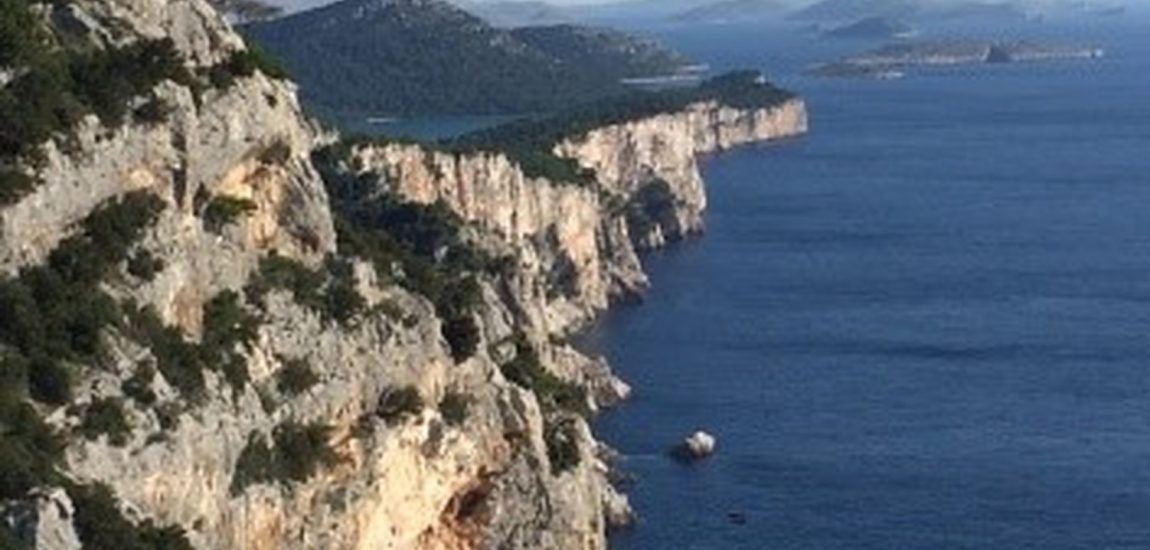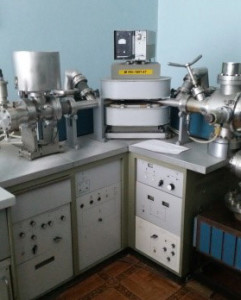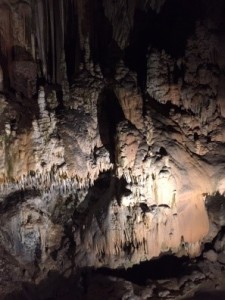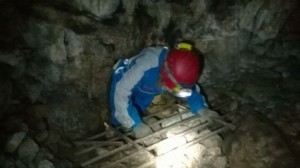
Speleothems connecting East and West

It was a great honor and challenge to be asked to present the 2015 EAG Distinguished Lecture Tour in four institutes in Ukraine, Hungary, Slovenia and Croatia. My lectures included 1) Speleothems as paleoclimate indicators; 2) Novel techniques in speleothems research for paleohydrological studies; 3) Water availability in Middle East and North Africa and the connection to human dispersal: insights from speleothems research. Abstracts and videos of the lectures are available here.
My journey started in Kiev, Ukraine, one of the oldest cities in Eastern Europe and an important scientific, educational, and cultural center. My hosts were the M.P. Semenenko Institute for Geochemistry, Mineralogy and Ore Formation, National Academy of Science of Ukraine, and the Institute of Geology Institute of Taras Shevchenko National University of Kiev where the talks were held. Before and after the talks I met Prof. Volodymyr Mykhailov, Dean of the Institute of Geology and Prof. Alexander Ponomarenko, Director of the M.P. Semenenko Institute. My visit included a tour of the Geology Museum in Taras Shevchenko National University, a very impressive museum with rich collections of minerals, fossils and rocks. I also enjoyed discussions with groups of scientists from both institutes and a tour of the laboratories of the M.P. Semenenko Institute where 1990’s mass spectrometers were still in good running condition.
In my talk I tried to present a complete overview of the speleothem paleoclimate research field, which is not yet part of the Kiev institutes’ research topics. It was very impressive to meet so many knowledgeable and enthusiastic scientists from a part of the world that yet has little chance to be exposed to international collaboration. The Kiev visit ended with a walk around the beautiful Old Kiev City, guided by our excellent host, MSc student Tatiana Ilchenko.
From Kiev I travelled to Budapest, where I was hosted by Prof. Attila Demeny and stayed at the guest house of the Hungarian Academy of Sciences in the castle precinct on the west (Buda) side of the Danube River.
The lectures took place at the beautiful Hungarian Academy of Sciences building located close to the famous chain bridge across the Danube.
Prof. Attila Demeny then took me to visit the impressive modern isotopes laboratories at the Institute for Geological and Geochemical Research. A fascinating field trip was arranged to the impressive Baradia cave system in Agglteleki National Park on the southern edge of the Slovakian Karst, and my hosts Prof. Demeny and Dr. Gyorgy Szuppon introduced me to their cave research and monitoring programs.
The next stop on my tour was the famous Karst Research Institute in Postojna, Slovenia, where I gave the talks, and in the Geological Research Institute of the Slovenian Academy of Science located at the beautiful center of Ljubljana. The visit to the institute included a guided tour of the famous and impressive Postojna cave by our hosts Dr. Bojan Otonicar and Dr. Franci Gabrovsek, thinking how lucky they are to have such a magnificent cave system. On the way to Ljubljana, we diverted slightly to visit the exquisite mining and metalwork village of Kropa, located in the foothills of the Julian Alps.
We then drove from Slovenia to Croatia along the beautiful (but rain swept) Adriatic coast line, to the magnificent city of Zadar located on the Adriatic shore, with its spectacular Roman ruins.
I presented the lectures at the Department of Geography of Zadar University and my hosts included Prof. Masa Suric, Dr. Nina Loncar and Dr. Robert Loncaric. We also
discussed future collaborative work on karst. Following my second talk, I was interviewed on Radio Zadar. The visit to Zadar included a field trip to the island of Dugi Otok ~20 km offshore. In the company of a park supervisor we visited the archeological and marine nature reserve ‘Nature Paek Telascica’, together with the Strasna Pec cave on the west cliffs where the major tectonic line of the Dinaric karst fault system can be seen. A second trip was to the Paklenica National Park (Starigrad) in the Dinaric Karst mountain belt. After a very steep climb through beautiful mountainous karst landscape we had the privilege of eating a traditional meal prepared by the local villager on top of the mountain.


Descending in the evening we visited underwater springs in the coastal Adriatic Sea emanating from long karstic caves emerging under the sea. At night, we visited with full caving gear, the speleothems of Modric Cave (Rovanjska).
I would like to thank all of my hosts for making me most welcome, taking the time to show their laboratories, to meet with colleagues and young students to discuss science and possible mutual collaboration, and to take me on fascinating field excursions to karstic terrains and caves. Many thanks to Marie-Aude Hulshoff (EAG) for the smooth arrangements for this fascinating journey, and to EAG for giving me this special opportunity of visiting the most fascinating Institutes in Ukraine, Hungary, Slovenia and Croatia.
Miryam Bar-Matthews (Geological Survey of Israel)
2015 EAG Distinguished Lecturer
About the author
Prof. Miryam Bar-Matthews obtained her PhD in geology from the Hebrew University of Jerusalem and is currently a Senior Research Scientist at the Geological Survey of Israel. Her main field of research is the reconstruction of terrestrial palaeoclimate during the last 500,000 years using high resolution cave Speleothem records. The research covers a wide spectrum: understanding karst processes from the rainfall source (oceans) to sink (caves); the use of isotope geochemical tracers as paleoclimate proxies; how speleothem records can be used to determine critical changes in the regional hydrological cycle, with their implications for rapid aridification/desertification processes and impact on human settlement and migration patterns. Most of her research is based in the eastern Mediterranean and North East Sahara regions, but ongoing research also focuses on South Africa and the southern hemisphere. She was awarded the 2013 Hans Oeschger medal of the European Geociences Union.

